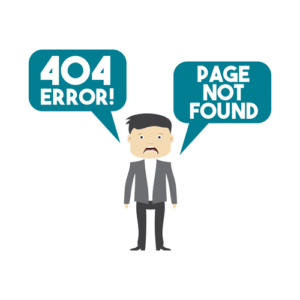A consignment contract differs from a wholesale deal in that you are not selling your products to the store. The retailer is acting as a third party, an intermediary working on your behalf to generate compensation from the sale, which is typically from around 20 — 60%. The split often depends on the shop’s brand reputation and sales volume. A well-known shop might ask for a bigger cut, but they might also sell your items faster. Consignment only refers to an arrangement where goods are placed in the care of store until the item is bought by a buyer. The owner of the goods — the consignor – retains ownership of the items until they sell.
Metal zippers, usually sewn into side seams or up the back, were standard until the late 1960s. Plastic or nylon zippers became prevalent starting in the 1970s, especially in mass-produced clothing. If you spot a chunky metal zipper, chances are you’re holding something mid-century or prior.
What Is Consignment?
- The success of a consignment shop can be significantly influenced by its location.
- In essence, when the consignee sells the goods, they receive a percentage of the payment.
- Join millions of self-starters in getting business resources, tips, and inspiring stories in your inbox.
- Its flexible buying and selling features include advanced payouts, item trades, and a buyback scheme where shoppers can return products for credits toward their next purchase.
- Many consignment shops and online consignment platforms have a set time limit (usually 60–90 days) at which an item’s availability for sale expires.
- When setting up a consignment shop, it’s crucial to immerse yourself in the intricacies of the industry.
It is crucial for long-term success as it strengthens the reseller and supplier relationship. The common types of products that are sold through consignment include clothing, shoes, antiques, and handicrafts. Under a typical consignment agreement, the consignee sells the goods on behalf of the consignor and then takes a percentage of the sales as a commission. The exact terms, including the commission rate and the duration of the consignment, are usually agreed upon beforehand.
What is Consignment?
The millennial generation, in particular, is known for its frugal shopping habits, which include eschewing high-end stores and designer boutiques in favor of bargains found at thrift and consignment shops. A manufacturer or retailer delivers goods to consignment stores or third parties; the two parties set up a contract which denotes how revenues from sales will be split. A consignment store is a retail store that sells consigned merchandise, or goods that are owned by someone else. The consignor, or owner of the merchandise, consigns their goods to the consignment store with the agreement that the store will sell the goods on their behalf. If and when the consignment store sells the merchandise, the consignor receives a portion of the proceeds from the sale. A consignment is a shipment of goods that are consigned, or entrusted, to a carrier.
Planning for Shopper Damage and Shoplifting
Resellers can reduce risk by using consignment, whereby they only pay for products when they are sold. Suppliers gain because they can concentrate on producing new goods instead of having to store unsold inventory. Keeping a record for cash flow statement will reflect the influx and outflow of cash which is very important to track by startups. A retailer that specializes in a market property plant and equipment ppande definition niche where customer demand is erratic might only take particular products during particular hours. The most popular categories of goods sold through consignment include seasonal fashion footwear and apparel, antiques, furniture, artwork, and jewelry items.
How Small Businesses Can Use Consignment
A consignment store is a business store that markets and sells goods or merchandise for commissions from sales price. Store owners do not need to own goods and don’t pay any fee for goods supplied. It was first used in the 18th century by European consignors who would ship goods to consignees in the Colonies. The consignor would net 30 payment terms send a bill of lading to the consignee, which specified the merchandise and its value.
Advantages of Consignment Stores
The cons of the consignor and consignee roles can be observed from the point of view of each. A proforma invoice is a statement which is used to provide information as to the particulars of the goods sent to the consignee. The word consignment comes from the French consigner, meaning “to hand over or transmit”, originally from the Latin consignor “to affix a seal”, as it was done with official documents just before being sent.
Training your staff in customer service, inventory management, and sales techniques is equally important to ensure a smooth operation. It should detail terms such as the sales commission percentage, item return policies, and quality standards. A grant accounting legal expert’s review of this agreement is recommended to ensure it’s comprehensive and legally sound. The success of a consignment shop can be significantly influenced by its location. The chosen space should be large enough to display items attractively while providing adequate storage. When setting up a consignment shop, it’s crucial to immerse yourself in the intricacies of the industry.
From understanding fundamental concepts to mastering advanced strategies, this program provides a comprehensive foundation for success in the field. Participants will gain a deep understanding of supply chain dynamics, logistics management, and the tools needed to optimise operations and drive business growth. This is the essence of consignment—a trusted arrangement that empowers individuals and businesses to increase their market reach without hefty upfront investments. There are several important legal considerations to be aware of when entering into a consignment agreement. Another advantage is the ability to build a loyal customer base as your business will develop a reputation for sourcing items that are in-demand. The owner of the goods is called the consignor while the entity selling the goods is called the consignee.
- The interior design should effectively showcase the consigned items, making them appealing to shoppers.
- Then there are terms like designer consignment, resale, thrift, and second-hand, which have more to do with denoting the type of store you’re shopping at than the contents.
- Understanding consignment payment structures highlights the importance of efficient supply chain and operational strategies.
- As a consignor you only get profits on products sold after the agreed timeframe.
- However, the consignor may retain ownership of the consignment inventory and may be responsible for its care and maintenance.
- Here are some solutions or features offered by ShiprocketX for consignors and consignees to navigate the international market.
The consignor sets the price and retains ownership of the inventory until it is sold. The consignee receives a commission on each sale and is responsible for displaying and selling the inventory. If the inventory is not sold within a certain period of time, it may be returned to the consignor or the consignment period may be extended.
Most consignment shops have standard fee schedules that indicate the percentage of the sales price that is paid to the shop and the percentage paid to the seller. However, many consignment shops are willing to negotiate, particularly for larger-ticket items, such as artwork, that offer greater revenue potential. Depending on the consignment shop and the item being sold, the seller may concede 25% to 60% of the sales price in consignment fees. Thrift shops and second-hand stores are examples of consignment stores that cater to consumers. Establishing a robust supplier-reseller relationship is imperative for the sustained prosperity of a consignment business model. In a consignment, the consignor owns the inventory and allows a third party, the consignee, to sell the product on their behalf.
Let’s say a consignor brings in 20 handmade scarves to a boutique to sell on consignment. The boutique and the consignor agree on a 60/40 split, where the boutique will receive 60% of the sale price and the consignor will receive 40%. Consignments are usually contract based between a consignor and consignee and they will split revenues according to the agreement. These businesses typically sell a mix of items, including furniture, clothing, antiques, and collectibles. The relationship between consignor and consignee is that of principal and agent which usually comes into existence through a contractual agreement. It means the title to the goods that are sent to consignee remains with the consignor even if the goods are present on the shelves of the consignee’s shop.
This guide explores the dynamics of consignment, its application across various industries, and why it has become a preferred choice for selling goods ranging from antique furniture to high-fashion items. Another example of consignment would be Bethany visiting her grandmother’s house and finding an old case full of clothes from the 1940s. She takes the clothes to a thrift store to sell the clothes on consignment. Bethany and the thrift store come to an agreement that Bethany will receive 60% of the revenues from the items sold while the thrift store will receive the remaining 40%.
Consignees can take as much as 60% in compensation for selling your products, costs which need to be factored in when determining how much it costs you to make or purchase the items in the first place. On the flip side, if a small business owns a shop, selling on consignment allows them to sell a wider range of products. This can attract more customers and help differentiate them from the competition.
“Consignment only” refers to a unique selling arrangement, where you retain ownership of your item until it sells. You entrust your goods to a store or platform (the consignee) to market and sell on your behalf. If your item sells, you earn money without the hassle of running a store, while the shop profits without risk of unsold inventory. If it doesn’t sell, you usually don’t owe anything, and the store returns your items. A consignor who consigns goods to a consignee transfers only possession, not ownership, of the goods to the consignee.














